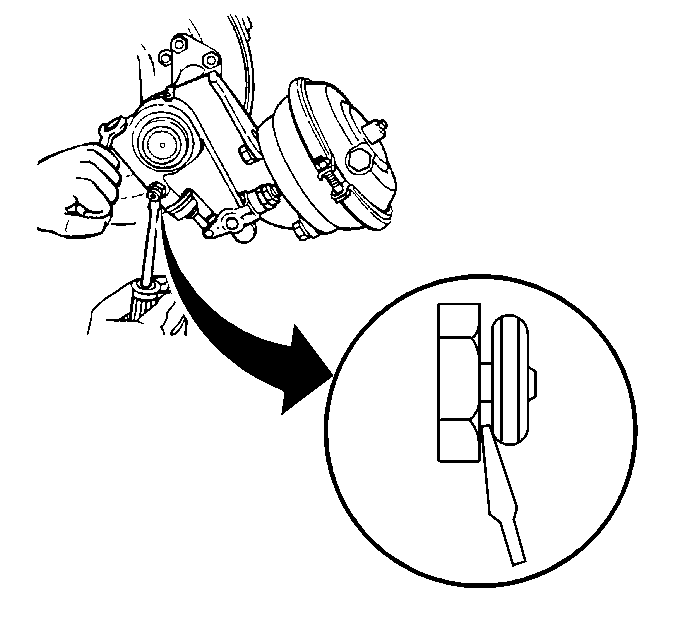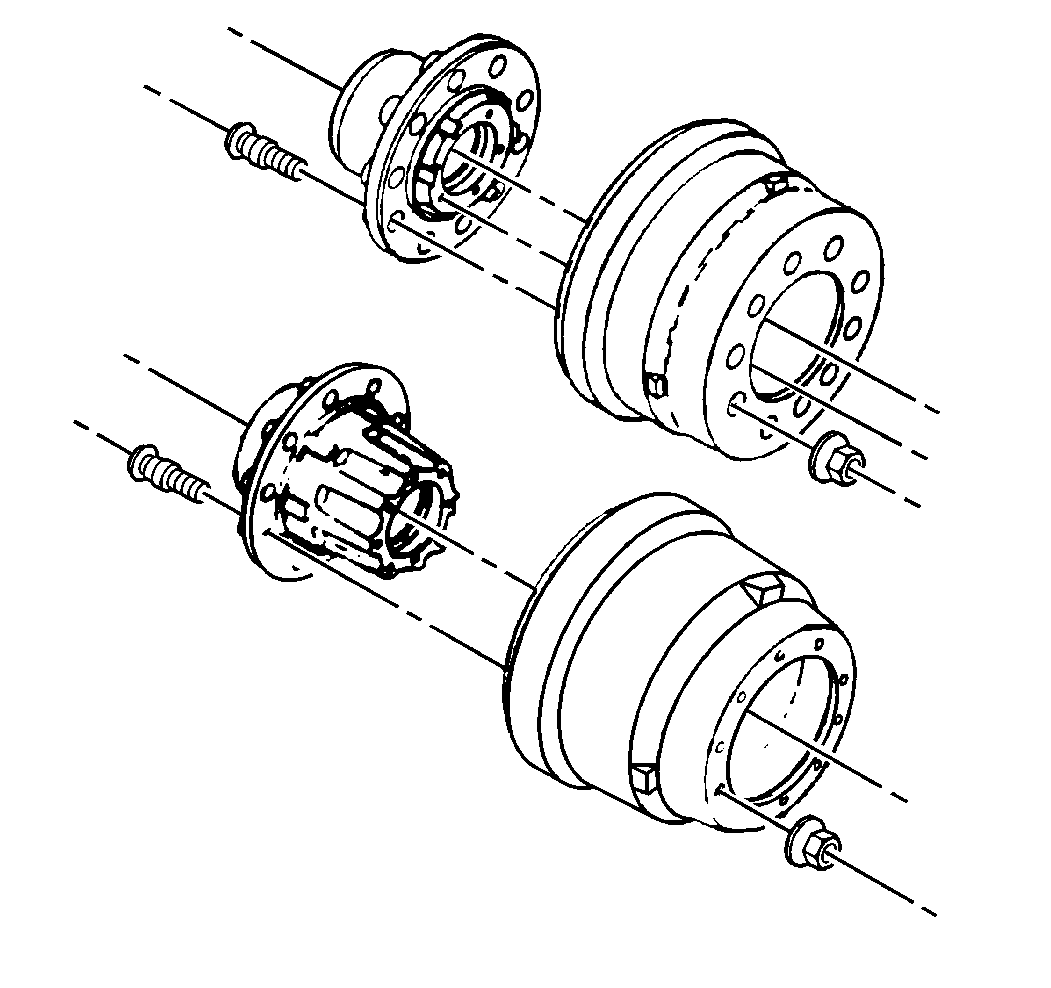Removal Procedure
Caution: Avoid taking the following actions when you service wheel brake parts:
• Do not grind brake linings. • Do not sand brake linings. • Do not clean wheel brake parts with a dry brush or with compressed air.
Notice: A new brake drum must have the protective coating removed from the friction surface before being placed in service. Use denatured alcohol or an equivalent approved brake cleaner, and wipe the surface clean with clean cloths. Do not use gasoline, kerosene or other oil base solvents that can leave an oily residue. This residue is damaging to brake linings and is flammable.
- Raise and support the vehicle. Refer to Lifting and Jacking the Vehicle in General Information.
- Remove the tires and the wheel assembly. Refer to Tire and Wheel Removal and Installation in Tires and Wheels.
- Cage the rear air brake chamber. Refer to Caging the Rear Air Brake Chamber .
- Slide the air drum from the hub outboard mounted. For the inboard mounted air drums.
- Clean the air drum using the Brakes Parts Cleaner GM P/N 12345754 or equivalent.
- Inspect the drum. Refer to Brake Drum Inspection .


Installation Procedure
- Slide the air drum onto the hub (outboard mounted). For the inboard mounted air drums.
- Adjust the wheel bearings if needed. Refer to Wheel Bearing Adjustment .
- Install the tire and the wheel assembly. Refer to Tire and Wheel Removal and Installation in Tires and Wheels.
- Adjust the brakes. Refer to Air Drum Brake Adjustment .
- Remove the supports.
- Lower the vehicle. Refer to Lifting and Jacking the Vehicle in General Information.
- Check the brakes for the proper operation.

